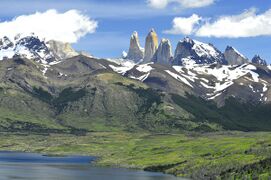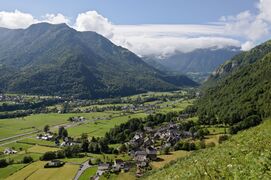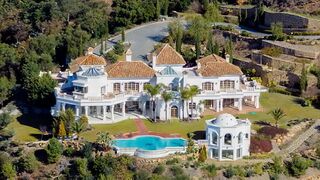Aciria
This article is considered abandoned lore either because its creator has changed projects or has left the community. Accordingly, it is not only non-canon but it is also eligible for salvage pending approval from an administrator.
|
Grand Empire of Aciria Grande Impero di Aciria | |
|---|---|
Motto: Forza attraverso l'unità Strength through unity | |
 | |
| Capital and largest city | Trossera |
| Official languages | Aciriano |
| Ethnic groups |
|
| Religion | Catholicism |
| Demonym(s) | Aciriani |
| Government | Absolute Monarchy |
| Ignazio Montefeltro | |
| Legislature | Grand Assembly |
| Imperial Senate | |
| People's Senate | |
| Establishment | |
• Triumvirate of Three Sisters | 300 BC |
• Kingdom of Aciria established | 87 AD |
• Free Republic established | 1615 |
• Grand Empire established | 1783 |
| Area | |
• Total | 4,122,251 km2 (1,591,610 sq mi) |
| Population | |
• Estimate | 369,250,000 |
• Census | 369,257,381 |
• Density | 57.9/km2 (150.0/sq mi) |
| GDP (nominal) | estimate |
• Total | $20.632 trillion |
• Per capita | $55.875 |
| Currency | Fiore (FIR) |
| Driving side | right |
| Internet TLD | .ai |
Aciria, officially the Grand Empire of Aciria (Aciriano: Grande Impero di Aciria), is a country located in northwestern Sarpedon, bordering Pelaxia and Caphiria. It also shares maritime borders with Kiravia. The seven administrative regions, three special administrative regions and imperial dominions span a combined area of 4,122,251 km2 (512 160 sq mi) and is home to over 369 million people. Aciria is an Absolute Monarchy, with its capital in Trossera, which is home to the Imperial Seat. Trossera is the largest city in the country, and its main cultural, political and commercial centre. Other notable urban areas include Soleramo, Marocino, Pantevenna, Dalora, Guidono, and Carrara.
The land of modern day Aciria was inhabited by a peoples known as the Glaistos to the Istroyans. The Glaistos were described as a warlike people, with the multiple tribal kingdoms in almost perpetual warfare with each other. Most notable of the tribal kingdoms was the one lead by Three Sisters, who are still beloved in the Aciriani nation today. Aciria was eventually annexed into the Caphirian realm which introduced the Latinic people into the region which eventually created the Glaisto-Latinic culture, laying foundation to the Aciriani language. The introduction of the Latin and eventual Catholicism brought stability and peace into the region which lasted until Aciriani independence in 1615, started by the declaration of the Free Republic of Aciria. An inefficient democracy, the Free Republic suffered from corruption, constant revolts and an unstable leadership due to coups and the People's Senate's inability to agree on various subjects. Despite this, the Free Republic era is remembered for not only its instability, but the first formation of the Aciriani identity, highlighting the various tribes that made up the Aciriani nation. The tumultuous succession of the governments came to an end in 1783 with the establishment of the Grand Empire of Aciria, declared by Giovanni I after arresting and executing the First Speaker and crowning himself Grand Emperor. Thanks to the power concentrated on the highly popular emperor and former military leader Giovanni I I and his various reforms, Aciria reached stability it hadn't seen in over a century. After the reforms, a period of rapid cultural, economic and scientific development followed. The stability and prosperity the House of Montefeltro has brought to the region is the reason the Emperor is still very popular among the people, still ruled by direct descendants of Giovanni I.
The Aciriani economy is highly developed, with the Aciriani GDP being third largest on Sarpedon. Despite this, the population has vast economic differences, with a large number of the population living near or under the poverty line. Aciriani population is the fifth largest on Sarpedon, with the population growth guaranteed by the controversial law that requires all physically able women to give birth to a minimum of two children in their lifetime. The population enjoys a well-developed public transport system, and benefits from universal healthcare which has quickly raised the Aciriani life expectancy since the founding of the Imperial Health Service in the 1950s.
Etymology
The name Aciria is thought to be a corruption of the Latin words "Occidentis Terra", or Western Land. It's thought that the word slowly developed into Aciria due to the linguistic differences between the local Glaistic people and the Latins, with the Glaistic people eventually merging the two words together into Aciria.
History
Prehistory
Antiquity
Somewhere in the 8th century BC, Istroyan traders made first contact with the local Glaistic people, suggested by Istroyan artifacts beginning to surface in modern day Aciria around this time. While the trade was lucrative for the Istroyans and allowed the introduction for foreign goods to the Glaistic people, the journey was long, which prompted Istroyan trading outposts to be founded off the coast of Aciria, with the most notable centers of trade eventually becoming the island of Montverd. The relations and contact between the two peoples developed over the centuries, eventually declining and leading to the Istroyan invasion of mainland Aciria, establishing Istroyan lead kingdoms on the mainland. The constant presence of the Istroyans lead to the creation of the Aciriano-Istroyan Kingdom and its successor states.
The 5rd century BC is characterised by cultural, diplomatic and military decline with various ethnic tensions between the Glaistic people and the ruling Istroyans. The infighting was taken advantage of by the Latin people to the east, whose migration into the lands grew during this period. It was also during this period when the triumvirate of the Three Sisters came into existence, with the stability and prosperity they brought to their respective kingdom quickly allowing word of mouth to spread word of the deified sisters across the lands of modern day Aciria.
The decline of living conditions eventually allowed for an easy Caphirian annexation of Aciria into their imperium in 376 BC.
Part of the Third Imperium
Age of Instability
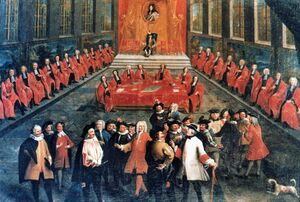
Once the schism raging over the continent eventually reached Aciria, the local governor, Silvano de Albairate drafted up a Declaration of Independence for the Free Republic of Aciria with the assistance of local nobles and clergy by offering them a strenghtened position in the soon to be established People's Senate. The Free Republic of Aciria quickly gained popularity with the commoners due to how promising having a say in the local governance seemed, along with the promise of ending instability in the region brought by the schism. de Albairate became the First Speaker to lead the People's Senate and be a figurehead for the new state, while the clergy, commoners and nobles elected their own representatives. The first three years of rule with de Albairate as head of state went relatively smoothly: relative stability was brought back to the region with the newly formed Free Republican Army, and issues were dealt with in the People's Senate. In 1618, however, de Albairate was granted emergency powers to allow swift decisions on how to stabilize the revolting southwestern region of Cantier; local commoners had revolted against the local nobles due to poor working conditions. The commoners in the senate disagreed with this decision, however, reminding the senate of King Edes and what his rule caused to the region. The nobles disagreed, and after hours of debating, the commoners walked out of the senate; encouraging the commoners to revolt against the "Novo Re, lit. New King". The senate quickly fell apart after this, with the nobles seizing power under First Speaker Vitelli. Eventually Vitelli's policies angered the clergy, which then caused them to overthrow the nobles, putting a council of clergymen in charge. Such coups happened over and over again, followed by usually revolts of varying sizes.
Age of The Empire
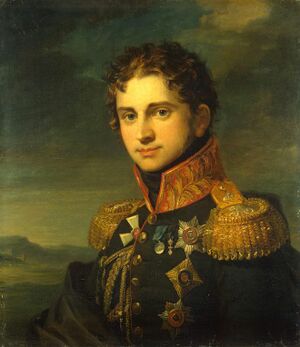
For nearly two centuries, the Free Republic of Aciria had been in a state of near constant state of insurrection. The constant instability meant a constant decline in population during this time period, as people not only died as a result of conflict or crime, but disease and malnourishment was also a major cause of death. Many Acirians leaving the country in pursuit of stability and peace to neighbouring states, or overseas if they could afford, also caused a notable hit in the population declining. Many educated Acirians in particular left the country, resulting in incapable and corrupt bureaucrats and military officers heading the country, a fact that was satirized by the book Il Regista, which brought up the rampant selfishness of the ruling class who put their personal gain over the wellness of the nation. The instability also meant that little cultural, economic or scientific discovery was made at the time, with Il Regista being one of the only notable works of art originating from this time period.
In 1774, the young military officer Giovanni Montefeltro had finished his pacification campaigns across southern Aciria, with him along with his troops making landfall on Montverd to finally end the rebellion. His rapid and relatively bloodless end of the rebellion on Montverd brought him great respect with the military, and through word of mouth, the people as well. His success and popularity resulted in him being granted the title of Marshal of Aciria on his return to Trossera. The title took him away from his traditional military duties, forcing him to take part in the bureaucracy and politics of the nation. These first hand experiences with the ruling class allowed Montefeltro to understand that the country would never recover and prosper as long as the corrupt bureaucrats were in power, inspiring him to join politics. His popularity allowed him quick entry into the Senate, and by taking advantage of the conflict with Montanaros in central Aciria, he was able to declare martial law and remove the First Speaker from his position.
Removal of the First Speaker was followed by Montefeltro's allies removing potential political threats from power all across the nation, leading up to Montefeltro declaring himself Emperor before the Senate. With the people behind Montefeltro, the Senate had no choice but to recognise Montefeltro as the First Emperor of Aciria, with his inauguration taking place only three days after the declaration. His ascension caused vast reforms in every aspect of life in Aciria, perhaps most notably the efficient administrative system known as La Catena, with the rampant corruption drastically cut down with the establishment of the Polizia Amministrativa Imperiale in 1790, which also doubled as a secret police, which allowed him to arrest and execute any opposition before becomign real threats to his power. Conscription was also established in 1795 to bolster the army's numbers and act as a deterrent, but the order was revoked in 1805 following a notable drop in quality of the armed forces. During Montefeltro's reign, it was the first time in nearly two centureis someone had held power for more than a decade: the peace and stability his reign brought was widely used as a propaganda tool by the state.
Geography
-
The mountains of the southeastern region are famed for their natural beauty. Pictured is Montagna Pianto.
-
The coast of Aciria is littered with beautiful historical towns such as Cantiere, which gained its historical wealth from shipbuilding.
-
The Aciriani heartlands are home to communities built in lush, green valleys.
-
The recently renovated Ritiro Imperiale on Montverde; the original villa was ordered by the First Emperor in 1798 after falling in love with Montverde during his campaigns.
The geography of Aciria has been both a blessing and a curse for the Acirianis. Most of the Aciriani lands are plains and flatlands, which has made Aciria an easy source of invasion from both foreign- and domestic powers. This has directly affected the turbulent history of the nation. The plentiful flatlands alongside the multiple rivers splitting the nation allowed the Acirianis to turn the landscape into vast fields to grow various crops in, and to this day Aciriani heartlands are known for their vast and beautiful fields, which still feeds the nation.
In the Griffe peninsula in the southwest of the nation and the southeastern Montanaro regions are the only sections of the country with notable elevation from the rest of the country, shown by the Montanaro who've managed to stay as a distinct language and ethnic group despite Aciriani efforts to assimilate them into the masses. Various mines have been established in the Montanaro region over the years, with various minerals, most notably chromium being discovered in the mountains there.
Ecology
Meteorology
Climate and environment
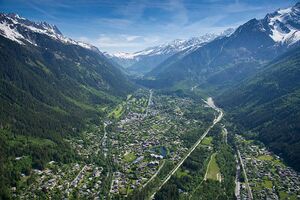
Government & politics
Government

The revamped constitution of 1784 grants the Emperor of Aciria the final say over all matters both foreign and domestic, alongside with the power to overrule any decisions made by the Grand Assembly. The Grand Assembly, on paper, is open to all citizens of Aciria. In reality, the Imperial Senate is practically inaccessible to someone with no nobility, military or aristocratic ties, as the Imperial Senate consists of nobility, high ranking military officers, and aristocrats. The Imperial Senate is responsible for the drafting of new laws and debating the budget on the first month of each year.
The People's Senate is more accessible, but still practically inaccessible to a vast number of the population: it consists of lower nobles, lower ranking military officers and upper middle class to upper class citizens. The People's Senate's duty is to inspect the laws drafted and budgets proposed by the Imperial Senate before it is presented to the Emperor, but the People's Senate has little to no say in the matters, effectively being just another bureaucratic body. Both the Imperial- and the People's Senate has their representatives changed once a decade with an election.
Administrative divisions
The seven administrative regions are Valariano, Aciriani Marini, Santa Beatrice, Fascia Orientale, Porto Nord, Dutelle and Canero. The administrative regions are all ruled by an Imperial Governor, who rules til death. The Imperial Governor is appointed by the Emperor himself, appointing only those he trusts the most to these roles, such as close family. The three special administrative regions are Trossera, Cantiere and Teravia. Trossera is directly ruled by the Emperor, as it is where the seat of the Empire and the Imperial Palace is located, but both Cantiere and Teravia are ruled by a military administrator loyal to the Emperor. Both of the regions earned this after repeated revolts in the regions, and despite for nearly half a century since the last noteworthy instability, the military maintains a strong grip on the region. The Imperial Dominions are bits of land of Aciria which are directly owned by the Emperor, not by the state. Such a dominion is Montverd, which is home to the Imperial Retreat. Despite this, all citizens of Aciria are allowed on Montverd and other Imperial Dominions due to the incredible beauty and historical significance these places may have for the people.
Military
Grand Army of the Empire
Officially formed in 1785 after two years Montefeltro took the throne, the army has then maintained both a constant presence in domestic affairs since its formation. After the failed Conscription Act of 1795, the army maintained its professional army until 1895 when Montefeltro's grandson Giuliano Montefeltro took the throne, and made a year long conscription mandatory for every able-bodied man. Ever since the act the definition of "able-bodied" has been hotly debated in the Imperial Senate, which has caused ages of either a more relaxed conscription, or a more strict conscription. Originally controversial, over time the conscription has become a rite of passage for young men in Aciria; and a chance for even the most disenfranchised of society to rise up to a higher social class via a military rank.
Polizia Amministrativa Imperiale
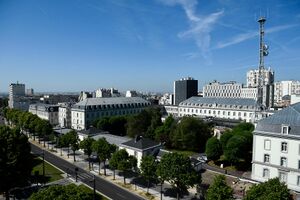
Formed in 1795, the Polizia Amministrativa Imperiale (PAI) has also had a constant presence in both domestic and foreign matters. PAI has been both praised for securing stability in the nation and rooting out corruption that plagued the nation before Montefeltro took over and criticized for infringing on the personal liberties and privacy of innocent civilians, and even accused of making people "go away". Until the 1950s, the PAI had a zero tolerance policy for speaking out against the state or the Emperor, but after reforms in 1957 and 1959, criticism of the government was allowed, and PAI's reputation has been slowly on the rise ever since, even if still somewhat controversial.
Imperial Guard
The Guardia Imperiale are the elite soldiers of Aciria, who are tasked with defending the Emperor and his possessions. The exact number of Imperial Guard is classified, with most of their numbers suspected to work in the military until a crisis calls for the assembly of the Imperial Guard. They are famously picked from the most promising of conscripts and trained relentlessly, sometimes even causing the deaths of new recruits who simply can't keep up with the rigorous training routine they have to go through. Typically they are seen outside of the Imperial Palace in Trossera, on Montverd or accompanying the Emperor's vehicles during his visits to other areas of his realm.
Economy
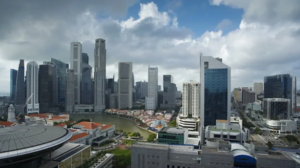
Aciria is a well-developed, middle-high income mixed economy. According to the 2018 report, 58% of the population is employed in the service industry, followed by 27% in the industrial sector and the remaining 15% in the primary sector. Despite the well-developed economy, many Acirianis live near or below the poverty line, employed by both the industrial and primary sector.
Primary sector
Majority of those working in the primary sector are employed in one way or another by agriculture. Due to the vast flatlands and fertile soil in Canero, many people chose to stay in the countryside and tend to the crops even after the 19th century industrial reforms made cities a more desirable location of living. Partially this was caused by majority of the farms owned by single families for centuries, amassing massive wealth. Typically the descendants of those working on these farms tend to stick to the profession of their parents, keeping a healthy rural population and an unusually large primary sector.
The second largest employer is the mining industry located mainly in the southeastern Montanaro region by the Grajnidarian border. The industry has caused mass migration of Acirianis to move to the Montanaro region since 19th century after jobs and in the early 20th century, a gold rush. The largest resources excavated in the Aciriani mines are gold, chromium, tin and iron.
The fishing industry is located almost exclusively in the Aciriani Marini region on the Griffe peninsula, with small fishing companies over time being bought out into larger conglomerates, such as Nutripois. The fish populations have been waning for decades, causing activists to campaign for the government to intervene in the large scale fishing operations off the Aciriani coast for the sake of biodiversity.
Industrial sector
Aciriani industry has slowly waned as the population moved away from factories to service jobs in the second half of the 20th century. As a result of this, many domestic companies went bankrupt and were either bought out by other domestic companies, birthing conglomerates like Voielle, buying out both Auto Imperiale and AcirAir's manufacturing wing. Because of these mergers, Voielle employs thousands of Acirianis in the manufacturing industry, creating cars, airplanes and telecommunications. Other major Aciriani industrial sectors are pharmaceuticals and chemicals. Minor oil deposits off the coast of Aciriani Marini in the 1980s has also caused a small oil industry to pop up in the region.
Infrastructure
Demographics
By far the majority of nation identifies as Aciriani, an umbrella term consisting of multiple former tribes that inhabited the modern day area of Aciria. The only notable minority in the nation is known as the Montanaro, who are one of the Aciriani tribes that refused assimilation under the umbrella term due to their distinct cultural and linguistic development caused by their remote location in the mountainous regions of the country, having limited contact with the other Acirianis until the 19th century. Other ethnic groups in the country are made up of whatever expats and other foreigners that have settled in the country over the years, which aren't accurately accounted for in the census.
Languages
Both the Free Republican constitution of 1615 and the Imperial constitution of 1783 declare Aciriano to be the sole official language of Aciria. The establishment of Accademia Aciriano in Trossera in 1799 has overseen the linguistic development and sanctity of the Aciriano language, ensuring minimal foreign influence in the language. Prior to the 19th century, Aciriano was only seen as the dialect of what is now known as Aciriano spoken in the region in and around Trossera, but assimilation and nationalism efforts in the 19th century created an Aciriani language and identity. The only dialect that to date has refused to assimilate has been the mountaineer peoples of the southeast, the Montanaro, who still demand to be recognised on a judicial level as both an official language and a minority language, which would grant protection against assimilation.
Education
The modern Aciriani education system can be traced back to the Education Act established by Giovanni I in 1783 which enforced the construction of People's Schools in the countryside to raise the literacy rates in the nation. The attendance in People's Schools was voluntary however, causing many parents to not send their children there and instead enlist their help at the farm as usual. Mandatory schooling was signed into effect by Emperor Lorenzo in 1888, who is commonly seen as the father of the Aciriani education system.
The education system is divided into three stages, primary, secondary and higher education. Primary is divided into years 1 to 6 and 7 to 9, years 7 to 9 usually being held at another location from 1 to 6. Despite all three stages of education being funded by the government, schools typically are segregated by the financial background of the students, becoming more apparent in secondary- and higher education due to them being application based, where the parents of the applicants can use their connections to ensure spots at more prestigious schools. The government has promised to crack down on this discrimination since the 1980s, but little change has been seen since. Higher education in particular is accused of discriminating against students of lower economic backgrounds, with 93% of new students annually coming from upper-middle class or upper class families. Notable centers of higher education are the Imperial University of Trossera, the first university in Aciria, established in 1576, and the University of Marocino, established in 1872. Imperial Academy of Trossera and the Naval Academy of Soleramo often accept applicants of lower economic backgrounds due to the possibility of rising in social status via the military.
Health
The Aciriani health care system provides various healthcare services to all Aciriani citizens, with the patient paying a percentage of the fees themselves, based on their income. Typically the patient has to pay between 10 to 30 percent of the fee. The government established Imperial Insurance is required to be able to benefit from the subsidized healthcare. This only applies to public, government ran hospitals and clinics, while the private owned, for profit hospitals can bill the patient for the full price of the treatments they received. Typically, higher income households prefer to use private insurance and use private hospitals, benefiting the lower income citizens by freeing up hospital beds and medical professionals in the public sector.
Smoking is common in Aciria despite decades of government campaigns against smoking to reduce the future medical expenses caused by the health problems that develop from smoking. Obesity has been on the rise since the 1970s, which is another source of concern for the government, causing the government to fine companies with overweight employees to encourage companies to encourage physical activity in their employees. Despite the rising obesity, Acirianis are some of the slimmest people on Sarpedon.
Major cities
Largest cities or towns in Aciria
2021 | |||||||||
|---|---|---|---|---|---|---|---|---|---|
| Rank | Region | Pop. | |||||||
 Trosseurs  Soleramo |
1 | Trosseurs | Trosseurs | 2,916,037 |  Marocino  Pantevenna | ||||
| 2 | Soleramo | Valariano | 1,009,361 | ||||||
| 3 | Marocino | Canero | 749,406 | ||||||
| 4 | Pantevenna | Aciriani Marini | 495,453 | ||||||
| 5 | Dalora | Valariano | 324,736 | ||||||
| 6 | Guidono | Canero | 304,963 | ||||||
| 7 | Carrara | Canero | 283,731 | ||||||
| 8 | Chegallari | Santa Beatrice | 274,289 | ||||||
| 9 | Fussere | Porto Nord | 232,873 | ||||||
| 10 | Soulone | Fascia Orientale | 212,613 | ||||||


